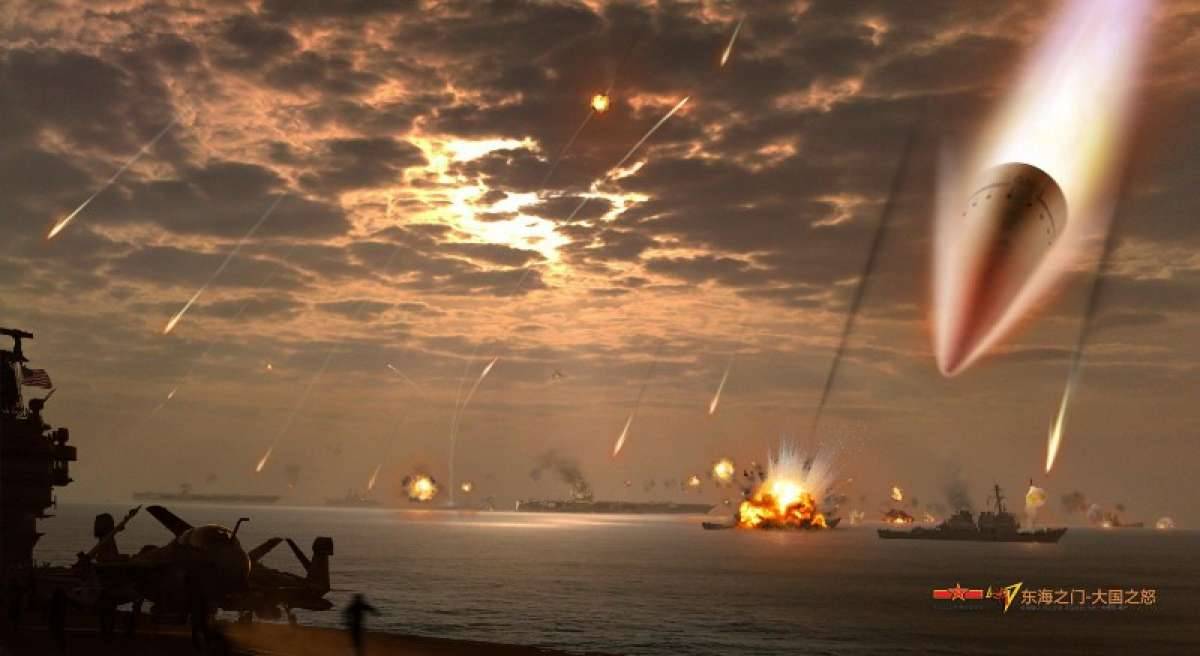
Artist Rendition of a DF-21 missile attack on the US Navy
Analysts warn S. Korea putting China ties ahead of national security
South Korea is bending to China’s will in resisting an adequate missile defense system, analysts and government officials say.The United States has urged the deployment of a THAAD (Terminal High Altitude Area Defense) battery in South Korea, but the move sparked strong protests from China.
A group of ruling party leaders in Seoul have recently gone public in favor of the THAAD deployment to better cope with the mounting nuclear and missile threats from North Korea, but the government has yet to make a decision out of concern about China’s response.
In a recent policy paper, Bruce Klingner of the Heritage Foundation said President Park Geun-Hye should nix her policy of “strategic ambiguity” over Chinese pressure and exercise the nation’s right to defend itself against North Korea, especially since China is seen as unwilling to confront its ally in Pyongyang.
South Korea has committed 8.7 trillion won ($8.1 billion) over the next five years to build up its theater missile defense shield and pre-emptive strike apparatus to cope with North Korea’s threats, EastAsiaIntel.com has reported.
Seoul will invest 6 trillion won in building the Kill Chain, and 2.7 trillion won into the development of the Korean Air and Missile Defense (KAMD) until 2020, according to the defense ministry.
Kill Chain entails launching a pre-emptive strike at the North’s asymmetric warfare capabilities and effectively retaliating against its small-scale provocations.
KAMD incorporates South Korean missile defense radar with early warning data from U.S. satellites. When a U.S. satellite detects missiles coming from North Korea, it signals a missile interceptor system called the Patriot Advanced Capability-2 (PAC-2) and other ship-based interceptors to shoot down the enemy missiles.
North Korea claims to now have the ability to attack the continental United States, American bases in the Pacific, and U.S. allies South Korea and Japan with nuclear weapons. In March of this year, North Korean Foreign Minister Ri Su-yong warned that Pyongyang now has the power to “make a precision strike at bases of aggression and blow them up with a single blow, no matter where they are on earth.”
North Korea’s arsenal is said to include at least 400 Scud short-range tactical ballistic missiles, 300 No-Dong medium-range missiles, and 100 to 200 Musudan intermediate-range ballistic missiles. The Scud missiles threaten South Korea, the No-Dong’s range includes South Korea and all of Japan, and the Musudan is capable of reaching U.S. bases on Okinawa and Guam.
U.S. experts estimate North Korea has 10-16 nuclear weapons and Dr. Siegfried Hecker, former director of the Los Alamos National Laboratory, added that Pyongyang could have 20 nuclear weapons by 2016.
No comments:
Post a Comment